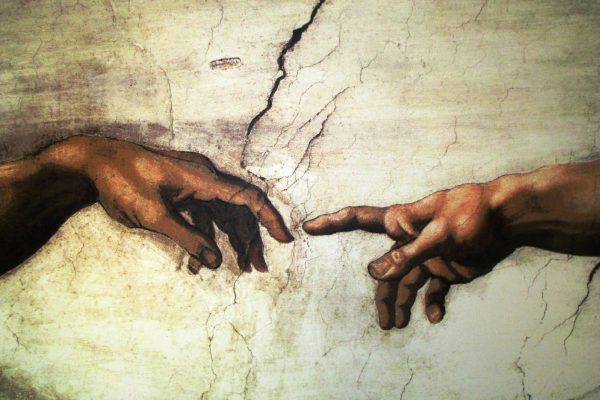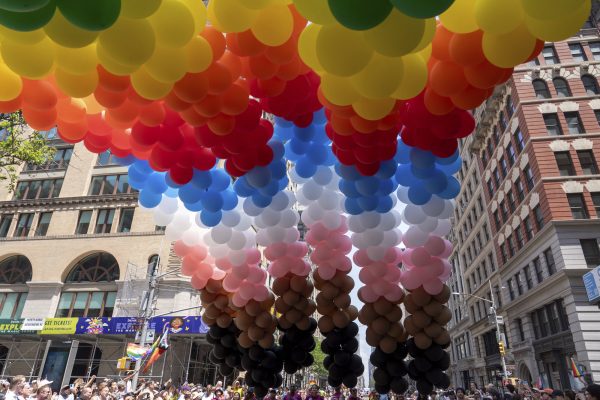There was nothing Milo Yiannoupolos could not get away with—not racism, misogyny, anti-Semitism, transphobia, or fat-shaming. Stiffing the writers and editors at his erstwhile online publication The Kernel, collecting hundreds of thousands of dollars for scholarships for white men ostensibly oppressed by affirmative action, then neglecting to give a penny away—none of this slowed Yiannopoulos down. Only after much protest over his vicious and prolonged trolling of African American actress Leslie Jones did Twitter shut down his account. But Yiannopoulos never felt compelled to apologize for, much less retract, anything.
Until this: his suggestion, caught on a widely circulated videotape, that not every sexual interaction between a boy and a man is traumatic for the younger partner. As an example, he offered his own happy relations, at fourteen, with an adult priest named Michael. Now Simon & Schuster has canceled his quarter-million-dollar book contract, he was disinvited from speaking at the Conservative Political Action Conference, and he has been forced to resign from his position at Breitbart News. Nowhere in sight are the civil libertarians who came to his defense when protesters ran him off of Berkeley’s campus. Why is this considered so much worse than every other obnoxious thing Yiannopoulos has said and done? And is it really so different?
Why is this considered so much worse than every other thing Milo has said and done?
The irony is that, unlike much of what Yiannopoulos says, his career-threatening assertion is factual. A meta-analysis of research on self-reports of child sexual abuse, published in 1998 in Psychological Bulletin, found that negative effects of sexual abuse “were neither pervasive nor typically intense.” In fact, two-thirds of the men in the studies and one-fourth of the women reported neutral or positive reactions to sexual experiences with adults. Girls suffered more attendant long-term psychological problems than boys. Many consider the analysis, conducted by psychologists Bruce Rind, Robert Bauserman, and Philip Tromovitch, the best of its kind. Other scholars replicated it in 2005 with similar results. Recently Rind and other colleagues analyzed the Kinsey data on first post-puberty homosexual experiences. Whether the relations were between people of the same age (teens or adults) or between teens and adults, the vast majority were pleasurable.
Outside of the United States, this reality informs policies regarding young people’s sex lives. The age of consent is fourteen in Italy, German, Portugal, and several other European countries, as well as in China and much of South America; it is fifteen or sixteen elsewhere in Europe; sixteen in Canada. Here many states set it as high as eighteen; about a dozen set it at sixteen, including Massachusetts. The United States also prosecutes underage sex with unique zeal—as it does all sex-related infractions. This is not to say that other countries rule out penalties for sexual abuse or exploitation of minors; they just acknowledge that minors may want to have sex, with each other or with adults.
In the United States, a sex panic now in its fourth decade renders plain, nuanced, or scientifically substantiated talk about intergenerational desire taboo. Religious conservatives, sex-abuse therapists, and victims’ rights advocates tarred the Rind meta-analysis as a broadside for pedophilia. Half a dozen states and both houses of Congress passed resolutions denouncing it. When investigation led me to question claims of widespread pedophilia, an analysis I present in my book Harmful to Minors: The Perils of Protecting Children from Sex (2002), I was presumed to be a member of NAMBLA. In 2015 Salon published a first-person essay by a celibate pedophile entitled “I’m a Pedophile, but not a Monster.” In response to outcries from people who deliberately misread the piece as a defense of pedophilia, Salon eventually took down the article. It is safe to say that no amount of backpedaling will save Yiannopoulos.
The Nation’s Joan Walsh and others have called Yiannopoulos’s right-wing critics hypocrites. The Republican Party, after all, stands firm behind a man accused by multiple women of sexual assault. Simon & Schuster’s conservative imprint, Threshold, was keen to profit from Yiannopoulos’s racism and misogyny, while CPAC was eager to use Yiannopoulos to look tolerant of queers. In his online assaults and fake news mongering, Breitbart News was a gleeful ally.
Now, suddenly, all of these are fretting about harming the vulnerable. You can’t help but wonder why people who otherwise delight in the transgression of social taboos would disown their “It” boy for smashing this one.
The sexually innocent, vulnerable child who merits protection is implicitly white. Children of color do not qualify.
Others have pointed out that questioning the sanctity of age of consent laws, which encode the notion that minors are incapable of desire, may be the last, greatest taboo in American culture—greater than racism or misogyny, condemned more passionately even than the rape of adult women (which is why Trump got away with his boasts and alleged assaults). But the claimed defense of children from “sexual predators” is not categorically different from the commission of aggressions against African Americans and Muslims. Anti-pedophile talk is not even a virtuous departure from the racist excretions oozing from the right. This is because the sexually innocent, vulnerable child people imagine themselves to be protecting is implicitly white. By the same token, a child of color does not qualify for innocence—or even childhood. There is therefore no hypocrisy: alt-right racism and xenophobia and the discourse of child sexual protection are of a piece.
In America race and notions of childhood innocence have long been entangled, writes Harvard historian Robin Bernstein in Racial Innocence: Performing American Childhood from Slavery to Civil Rights (2011). By the nineteenth century, “white children became constructed as tender angels while black children were libeled as unfeeling, noninnocent nonchildren.” Jim Crow laws and lawlessness were predicated on the myth of a rapacious black “buck” threatening the sexual purity of white women and girls. That is the central trope of D. W. Griffith’s racist propaganda film The Birth of a Nation (1915) and the calumny that incited the 1955 lynching of Emmett Till, falsely accused of propositioning and touching a white woman. Till was fourteen years old, the same age as young Milo when he had his encounters with Father Michael.
In the same way the vision of defending virtuous white womanhood undergirded centuries of racial segregation and violence, our current regime of draconian sentences, post-incarceration registries, residency and work restrictions, and indefinite lockup in civil commitment for those convicted of sex offenses of all kinds—not just against children—was constructed in response to spectacularly violent, and rare, crimes against white children. The major statutes bear the name of the victims: Jessica [Lunsford]’s and Megan [Kanka]’s Laws, the Adam Walsh Act. One of those crimes was the 1979 kidnapping and murder of seven-year-old Etan Patz in Manhattan; his mother, Julie Patz, became a vigorous lobbyist for new, harder sex crimes laws.
The same summer that Etan’s disappearance spurred one of the most intense and long-lasting manhunts in American history—a former bodega worker was tried and convicted of his murder just this month—African American children in Atlanta began to turn up dead. By the following spring, twenty-three had been killed; the youngest, Latonya Wilson, was seven. It took months for the national press to notice. Local law enforcement efforts to find the murderer were lax at best. No laws were passed in their names.
Indeed, non-white youth are likely to be described not as prey but as predators. In the 1980s an allegedly ruthless, remorseless young African American male criminal—the “superpredator”—came to inhabit the white imagination. In 1989 when a white jogger was raped and left for dead in New York’s Central Park, the media invented the term “wilding”—implying bestial savagery—to describe the activities of the five black and Latino boys accused and wrongfully convicted of the crime.
As Erica R. Meiners and I wrote in Counterpunch last year:
In a nation where 18-year-old Michael Brown is compared by the police officer Darryl Wilson to the comic book character the Hulk; where 12-year-old Tamir Rice is lethally assumed to be playing in the park with a real, not a toy, gun; and where white teachers identify 8-year-old black boys as “unchildlike” and “dangerous” (as sociologist Ann Ferguson documents), not all children or juveniles invite equal sympathy. As powerfully broadcast by #BlackLivesMatter and associated organizing including the Black Youth Project 100, many in law enforcement cannot conceive of any African American as innocent, or childlike.
Likewise, Latin American and Middle Eastern children are now viewed not as imperiled but instead as perilous agents of deceit. As drug violence drives Central Americans from their homes, minors from that region arriving unaccompanied on our borders have until recently been received with kindness and assigned immigration lawyers to represent them; most gained asylum. But new Homeland Security policies eliminate such compassionate treatment of children whose parents already live here, on the principle that the adults are scamming immigration authorities to get their kids into the country. The children can be detained or deported and the parents charged with human trafficking.
By the logic of Trump's travel ban, even the youngest child might be a terrorist.
Under the logic of the travel ban from seven Muslim-majority countries, even the smallest child might be a terrorist. When a five-year-old American returning from Iran to rejoin his mother was held for hours at Dulles National Airport, White House Press Secretary Sean Spicer defended the detention. “To assume that just because of someone’s age or gender or whatever that they don’t pose a threat would be misguided and wrong,” he said.
Non-white children and youth are figured as criminals, white children as victims in waiting. But the rhetoric and policies of child sexual protection fall short of protecting any children, of any race. For instance, child abuse is highly correlated with the stresses and deprivations of poverty, but alleviating poverty is low on the political agenda. Sex offender registries and restrictions barring former offenders from parks and schools are designed to guard against stranger danger—but the people most likely to abuse a child are family members and close friends. The registries don’t protect kids at home and have no effect on public safety outside it.
So why did Yiannopoulos gain nothing by telling the press that he had come to understand himself to be a victim of child abuse—that is, the abused white child everyone is so set on defending? It is not just the transparency of this cynical play for sympathy. Like blackness, Yiannopoulos’s queerness implicates him as a predator: gay men have long been smeared, inaccurately, as pedophiles. And as a victim, he did not go far enough. As long as Yiannopoulos did not represent his attraction to men as a pathology caused by sexual abuse—as other Catholic boy victims have done—he was suspect.
This homophobia is written into United States sex law. Strictly speaking, age of consent law criminalizes all underage consensual sex. But queer youth who transgress these statutes often face greater penalties than straight kids do. Some states set the age of consent higher for homosexual sex than for heterosexual sex. Many states, recognizing the enormous lifelong consequences of a sex crimes conviction, have enacted “Romeo and Juliet” amendments mitigating statutory rape prosecutions of minor partners who are close in age. Yet for kids to qualify for these exceptions under Texas and Alabama law, Romeo must be a boy and Juliet a girl. Lawrence v. Texas, the 2003 Supreme Court that established a fundamental right to consensual same-sex relations, probably invalidates those iniquitous laws—a Kansas statute was overturned on those grounds—yet systemic anti-queer bias persists.
Opposition to transgender students using the bathrooms of their choice is based on the fear that boys or men masquerading as girls and women will sneak into female spaces to commit sexual assault. In fact, it is the other way around: transgender people, especially transwomen and girls, are at risk of violence every time they step into the restroom.
It comes down to this: the other—be he black, brown, or queer—can neither be a child nor be trusted with a child. Yiannopoulos, bottle blonde in pearls, made an amusing confederate of the alt-right when he was acting as champion of the put-upon straight white man. The self-styled Dangerous Faggot could go to battle against feminazis and African American “social justice warriors.” But when it came to shouldering the white man’s burden of protecting sexually pure children, he was not man enough.








